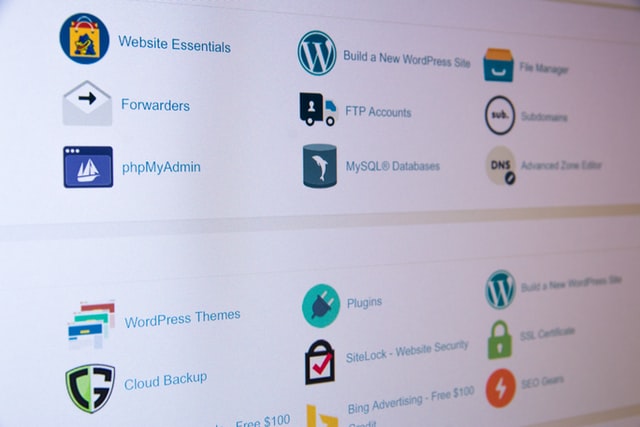How to Complete WordPress Backups Manually or With a Plugin
Backing up your WordPress site is something you’ll want to master as soon as possible to avoid disappointment down the road. It may appear that learning how to back up a WordPress site isn’t a pressing need. Unless something happens to your website, it becomes urgent (but maybe by then, it’ll be too late).
As a result, you should consider WordPress backups as a way to protect the hard work you’ve put into creating your website. You won’t be caught off guard if an emergency occurs, such as a security breach, malware issue, or human error. WordPress backups ensure that your site data is accessible if you need to enter recovery mode to get your website back up and running.
Why Are Backups Essential?
Most hosting companies provide automated website backups, but if the provider goes down, you won’t be able to access your site immediately. Furthermore, any industry is vulnerable to hacking; therefore, no matter what you do, you must work incredibly hard to guarantee that your site’s access is not lost. Your users’ experience will be disrupted if your website fails, and your business may lose revenue or customer trust.
This is where WordPress backups come in handy. When performing backups, you can rest confident that a hosting provider outage will not cause problems for your WordPress site. If something goes wrong, you may quickly restore your website, so your company doesn’t miss out on income prospects owing to the crash’s unnecessarily long downtime.
When to Backup?
Because it’s hard to foresee when something like this will happen, it’s a good idea to back up your website as often as possible. Manually backing up your WordPress site, on the other hand, could take a long time, so daily (or even weekly) backups may not be possible. When backing up your WordPress website, it all comes down to how ready you are to risk losing important data. If your website is rather static, a weekly backup may be sufficient. However, a weekly backup will almost certainly be insufficient if you run an online store or blog.
At the very least, you should backup your WordPress website once a week, but keep in mind that you will almost certainly lose important data. As a result, daily backups are ideal. While making frequent WordPress backups is an extra step, consider protecting what you’ve built. Remember that the most convenient method of backing up a WordPress site is the one you use. Fortunately, there are numerous possibilities.
Two Ways To Complete WordPress Backups:
There are two ways to complete a WordPress backup. These are:
● Using Plugins
● Manually
Using Plugins: Despite the fact that WordPress has a lot of functionality, there isn’t a magic button you can press to create a backup of your existing website. WordPress plugins come in handy in this situation. These software components allow you to add useful features to your website without knowing how to code. While there are various WordPress plugin options, the UpdraftPlus WordPress Backup Plugin is the most popular backup plugin.
Follow these steps:
● Install and activate the UpdraftPlus plugin from WordPress.org to get started.
● Then, in your WordPress dashboard, go to Settings → UpdraftPlusBackups.
● All you have to do is click the big blue Backup Now button to make your first backup.
● This will create a window where you can select which files to back up. You can use your site’s files, database, or both.
● Select both boxes because this is your first backup. Then, click on the Backup Now button.
● This will begin the backup process, which could take a while, depending on the size of your site.
● When the backup is complete, it will appear in the Existing backups area.
● Click the five options under Backup data to download the backup files to your local computer.
● To ensure that you have a complete backup of your site, download all five pieces of data.
Manually: There are two ways to manually backup your WordPress site. These include:
– FTP
– cPanel
cPanel:
1. Log into your cPanel account.
2. Select File Manager from the Files menu.
3. Locate the public_html folder on the left panel and expand it by clicking the + sign. Choose the folder that contains the name of your website.
4. Compress your website’s folder by right-clicking it.
5. Click Compress File after selecting Zip Archive.
6. Select the zip file and click Download on the top menu bar once the compression is complete.
7. Place your backup in a safe place on your hard drive now.
8. You’ve finished your manual backup! Repeat this procedure as many times as necessary.
FTP:
1. Open your preferred FTP client. On the left panel, you’ll see your ‘local site,’ which contains the folders on your computer, and on the right, you’ll see the remote site. We haven’t linked to it, so that it will be greyed out. Connect to the server by entering your credentials.
2. When the server connection is established, the directory on the remote website will populate (right panel). Navigate to public_html or the folder of your website xyz.com.
3. You can right-click on a folder and download it to your local system. You may also drag and drop files from the right to the left panel into the folder we created if you want to choose specific files.
4. After that, you’ve completed a manual backup of your files. We suggest encrypting the data and saving it in a zip file.
Data is fragile and important. It is essential to protect this important data at all costs so that you do not have to waste time retrieving it when it is lost.
So, it’s time to put what you’ve learned about backing up a WordPress site into action. WordPress backups will ensure that your material is always accessible, and you won’t have to start over if your hosting provider goes down.
If you are looking for HTML or WordPress professionals experts, Helpbot is the ideal place. We are a team of efficient WordPress developers who offer the best WordPress 24×7 support service Agency to our clients.



